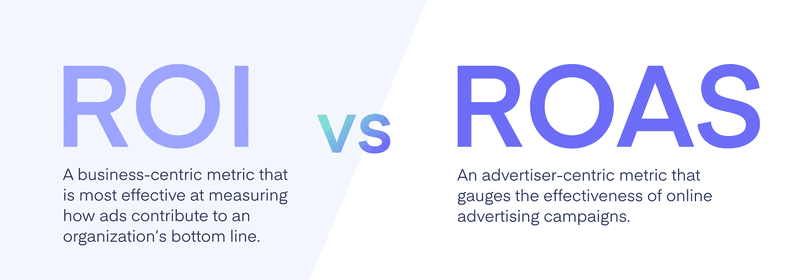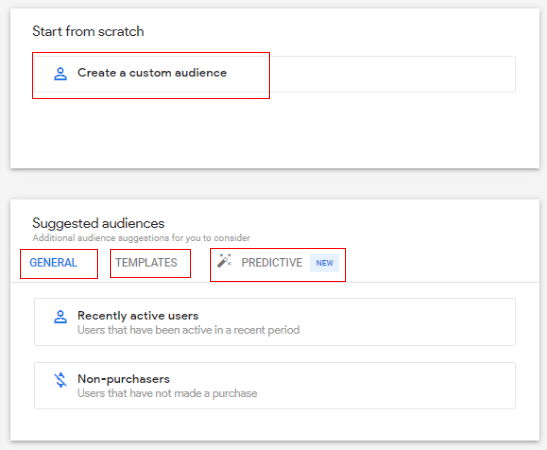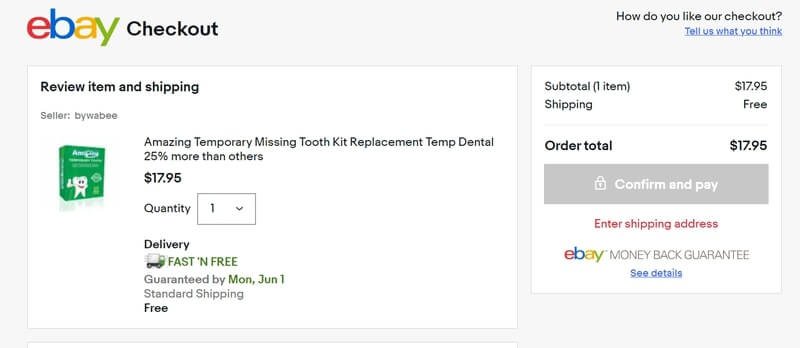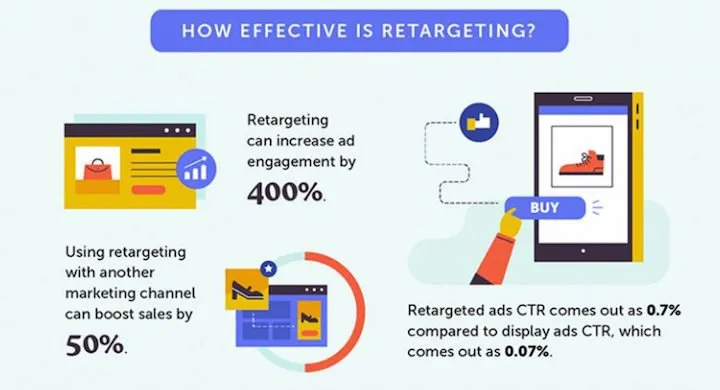Understanding ROAS: How to Improve Your Return on Advertising Spend in 2025
Here's a comprehensive guide on ROAS - Return on Advertising Spend. Learn what it is, how it compares to ROI and the top strategies to improve your ROAS.
Updated November 6, 2024.
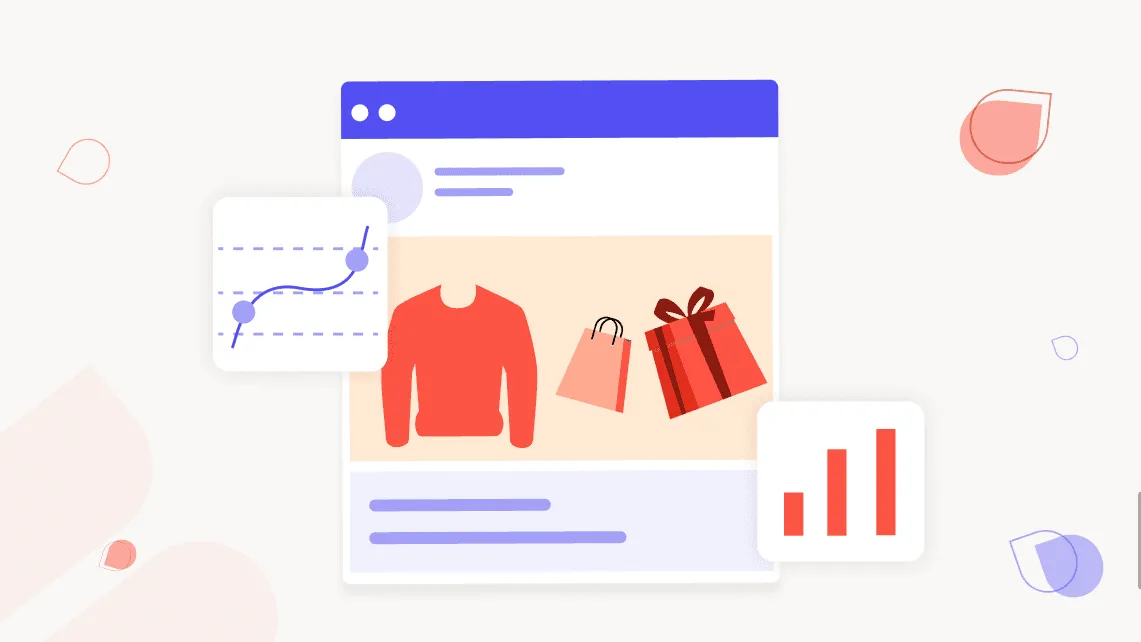
Picture this: you’ve launched a few ad campaigns and they are not making the big bucks that you were hoping for.
Something is not working.
What do you do?
Do you start from scratch?
Re-design your creatives?
Change the copy?
One useful way to go about improving your ad performance is to focus on your ROAS.
ROAS, or Return on Advertising Spend, is one of the fundamental metrics of the advertising industry. It’s easy to calculate and since it doesn’t take any other costs of doing business into account, it’s an easy way to understand the effectiveness of each advertising campaign and your sales funnel as a whole.
In this guide, we go over how to calculate ROAS, how to track it accurately, and all the things you should do to improve it.
Let’s dive in.
What is ROAS?
ROAS or return on advertising spend refers to the amount of revenue that is earned for every dollar spent on an advertising campaign. It shows the profit that was achieved from each campaign and is an important key performance indicator (KPI) in online advertising.
You can measure ROAS for an entire marketing strategy, for an individual marketing channel, or for a specific campaign, or even the ad level.
The ROAS Formula: How to calculate Return on Advertising Spend (ROAS)
Calculating ROAS is easy:
ROAS = Ad Sales / Advertising Costs
If you spend $10 on an ad campaign and you can attribute $50 in sales to that campaign, your ROAS is $5.00. ROAS is often expressed as a multiplier, so a $5.00 ROAS is also known as 5X. I prefer to use currency values.
Its simplicity has advantages and disadvantages. On one hand, it’s a useful marketing metric to get a clear understanding of how well your advertising is performing. On the other hand, it has only a limited relationship to profitability.
Calculating your Breakeven ROAS
When you’re launching the first set of campaigns for a new brand, a ROAS of $1.00, or 1X, is often the first benchmark to hit. However, it’s a symbolic one, as generating a dollar in sales for each advertising dollar spent is not sustainable. If your ROAS is $1.00, you’re losing money with each sale.
When I work with eCommerce companies on their advertising campaigns, the next benchmark to hit after $1.00 ROAS is the breakeven ROAS -- that is, the ROAS at which the costs of selling the product are covered.
There are a number of ways of determining the selling cost value to use for calculating your breakeven ROAS.
My method for eCommerce businesses is to add up the following:
- The cost to manufacture the product
- All the shipping costs incurred in getting it to the customer, including from the factory to the point of sale
- Any per-unit selling fees (for example, FBA fees if you're selling on Amazon)
Notably, this does not include overhead fees that don't directly relate to the sale of a single unit, like office rent.
If you're an Amazon FBA Seller selling a product for $100 and it costs you $30 to produce your product, another $10 to get it to the Amazon Warehouse, and another $20 in Amazon FBA fees (I'm simplifying the math here), then $60 is the selling cost I would use to calculate the breakeven ROAS.
Breakeven ROAS = 1 / profit margin percentage
Since your selling cost is $60, your profit margin on that $100 item is 40% (or 0.4). So:
1 / 0.4 = 2.5
$2.50 (or 2.5X) is your breakeven ROAS. For every $100 you invest in sales, your ads must generate $250 in sales in order for you to break even.
The breakeven ROAS can help you set the right target ROAS for your marketing campaigns and help you increase your advertising budgets accordingly.
The Difference between ROAS and ROI in measuring performance
Also, make sure that you are using the right attribution model. First-click or last-click attribution models may not be the most accurate way to attribute sales to your campaigns and you may need to switch to a multi-touch attribution or a multi-channel attribution model.d
A robust advertising ROI calculation will also include the full stack of advertising costs, including the costs of managing advertising campaigns (whether it's the cost of an internal resource or agency commissions), and the costs of producing ad creative like banners or video.
Although ROI is more critical from a business perspective, ROAS is essential because it answers the question of how well your advertising is performing. And, if your advertising simply is not performing well, it’s a fundamental problem that must be addressed.
Why does return on ad spend matter?
There are lots of advertising metrics you could analyze to optimize your campaigns and it's often hard to know what to focus on to make the right decisions. ROAS helps you focus on each advertising campaign and determine whether it's bringing you the money you expect it to. It can help you make quick decisions and reach profitability sooner.
What's a good ROAS?
The ROAS target is different for each brand based on their profit margins and business metrics. But there are some general standards across advertising platforms. Let's talk about a few of them.
What's a good ROAS for Amazon?
If you're selling on Amazon, experts will tell you that a 4:1 ratio or $4.00 is a good target for most categories. Of course, $4.00 may not be enough to meet your business goals, but if you're regularly hitting $4.00, you can pat yourself on the back for reaching that milestone and continue looking for ways to do even better.
What's a good ROAS for Facebook?
Successful Facebook marketers report a ROAS of $4.00 - $6.00, or even higher. But, getting there takes careful work and planning.
Top-of-funnel Facebook ads (where you're targeting an audience that is new to your brand) will generally have lower conversion rates than down-funnel campaigns which target Facebook users who have already interacted with your brand in the past. So it's important to not get discouraged by the immediate conversion rates of your first Facebook campaigns.
Facebook users take longer conversion paths compared to ad platforms like Amazon, which are close to the point of sale. Success comes from careful campaign planning and knowing how to effectively use the Meta Pixel (formerly known as the Facebook Pixel) to set up narrowly targeted remarketing campaigns.
If you're new to Facebook advertising and you have a $4.00 - $6.00 ROAS in your sites, your best investment may be in a Facebook advertising expert, ideally one who's familiar with your industry.
What's a good ROAS for Google Ads?
Just like with Amazon and Facebook, Google Ads performance varies widely by industry. The average ROAS across all categories and Google ad types is low, around $2.50. That average is higher for search ads and Google Shopping campaigns, as they target customers who are actively looking for a product.
Just like Facebook advertising, optimizing for a broad ROAS requires preparation and planning, and maybe best left to a Google advertising expert who has experience in your product category.
Strategies for Increasing Your ROAS
ROAS is a function with three inputs: your average cost per click, your conversion rate, and your revenue per conversion. An effective advertising plan requires that you optimize for all three, and to optimize, you need data.
Many first-time sellers understandably take a timid approach to advertising, particularly when marketing budgets are tight. They start by dipping their toe in the water, figuratively speaking, to mitigate the risks of running marketing campaigns that don’t deliver desired results.
It may be counterintuitive, but a better approach is to just jump into the deep end of the pool.
That's because you need enough ad performance data to enable you to make sound decisions. Statisticians call this collecting a large enough sample size to reach a reasonable margin of error.
If you get to this point in two weeks, you can begin making smart decisions and course corrections fairly quickly. If your budget only allows you to collect this data after six months, that’s time lost that you’ll never get back.
Here are eleven strategies for improving ROAS. This is a high–level overview of the basics, and each of these is worthy of an article on its own.
Make sure your data is accurate
First things first, you need to make sure that you are measuring your ROAS accurately. You should only be including advertising costs into the equation and not things like fulfillment costs.
Also, make sure that you are using the right attribution model. First-click or last-click attribution models may not be the most accurate way to attribute sales to your campaigns and you may need to switch to a multi-touch attribution or a multi-channel attribution model.
Pro tip: You should also make sure that your conversion tracking is accurate. Make sure that you look at the offline conversion data and compare that with your Facebook clicks to get more accurate conversions.
Lower your cost per click
Take a granular approach to your campaign planning.
Don't get overly excited about a campaign that has a high click-through rate. You might be getting more clicks but you may be overpaying for them. Look at your average cost per click per campaign and see where you can lower it.
If you’re using audience-based targeting, slice your demographics (things like age, gender, and location) and psychographics (lifestyles and interests) as narrowly as possible. If you’re bidding on search keywords, break them up into multiple campaigns, and look out for keywords that are overly specific, as they tend to cost more.
Test, tweak and repeat.
Make sure that your campaign planning process involves optimization. Optimization is important because a “set it and forget it” attitude isn’t the right approach. Get into a habit of reviewing the actual customer searches to build your negative keyword lists, and testing new creatives and new targeting and bidding strategies.
Keep a close eye on automated bidding options
Most major ad platforms have options for adjusting bids upward for prominent placement, like the top of search, or for instances when the advertising algorithm predicts that your ad is more likely to lead to a sale.
This should be an essential part of your bidding strategy. But, if you’re not careful, these can lead to higher CPCs than you’ve been expecting. Watch the results and make adjustments when you have enough data.
An auto-bidding tool that raises bids by 50% to get you that top-of-page placement, but which only increases conversions by 5%, isn’t worth it if it takes your ROAS to below an acceptable amount.
Use negative keywords
Negative keywords are those keywords that your ads are set not to target. They are incredibly important in making your campaigns more efficient. Studies show that the average Google Ads account wastes 76% of its budget targeting the wrong keywords.
Narrow your target audience
Sometimes your campaigns aren't performing well because your audience is too broad. That's why my fellow Mayple expert Drew Blumenthal mentioned creating as many audiences as possible in his guide on Google Analytics. Create super-specific audiences by their intent, their place in the marketing funnel, demographics, and interests.
Improve your post-click conversion rate
If you’re new to eCommerce, you may be eager to launch an ads campaign right away. After all, you’re really proud of all the hard work you’ve done to develop your product line, and the marketing efforts you've put into the packaging and design. You can’t wait to see what potential customers think.
When emerging brands have come to me for help, there's a common scenario: their digital advertising isn’t performing well at all, and they can’t figure out what’s wrong with their campaigns. Campaign performance is really low and their cost of advertising is through the roof.
Sometimes the problem isn’t with the campaigns but with the conversion rate on the website, with the content at the point of sale. It could be that they don't have the right email marketing flows setup or don't have popups, or their checkout process is too complicated.
In particularly severe cases, the right course of action is to pause all advertising immediately and turn attention to conversion rates. Your advertising efforts will only get you so far without a high enough conversion rate on your site. So work on that first.
Make sure the quality of your product meets or beats that of your competitors
A fundamental truth of eCommerce is that customers have little patience for products that looks like they were done by a well-meaning amateur. The product landing page must fulfill the promise made by the ad and show the customer what they expect to see.
You must take the time to make sure that your product images are of high quality. That means, don’t take the photos yourself with your phone, or if you’re using product renderings, don’t hire a 3D artist from one of those five-dollar gig sites.
Get a professional writer to write your copy, or at the least, have it proofread (even the best copywriters can make mistakes).
Ultimately, ask yourself: if you were a customer, would you buy this product based on how it’s presented?
Make sure that the purchase process is as easy as possible
The checkout process is one of the most important parts of your site to get right. This is less of an issue if you are selling on Amazon since the platform already has an optimized, simple, and comfortable checkout process.
But quite a few customers decide to leave their comfort zone and make a purchase directly on an eCommerce site and you have to be ready to wow them. Make the checkout process fast and easy for them, otherwise, they will abandon your site.
There are many ways to optimize your checkout process including moving to a one-page design, optimizing for mobile devices, displaying your shipping costs upfront, and adding trust badges.
Design for the mobile customer
Assume that half of your customers will be shopping on a mobile device. The best way to convert mobile visitors into customers is to ensure that your merchandising – carousel images, banners, instructional infographics, and videos – are usable and enjoyable on small screens.
Increase your revenue per conversion
Maximize revenue at the point of sale
Maximizing revenue at the point of sale is accomplished by making it easy for visitors to discover higher-priced items, like bundles or upgrades. Offer accessories and upgrades inside your checkout process.
If you’re selling on Amazon, this is accomplished by using the product variations feature, and by including a product comparison module in your A+ content. If you’re an FBA seller, you can use Amazon’s virtual bundle tool to offer plenty of options for the customer to choose from.
Carefully plan your remarketing strategy
ROAS isn't just about making that an immediate sale. It's about multi-touch conversion.
Have you ever purchased a product at retail, and then immediately seen ads for the product you’ve just purchased? That’s an indicator of a remarketing plan that’s in need of improvement.
Take the time to set up the Meta (formerly Facebook) and Google pixels correctly to make sure that your customers only see ads for upgrades and accessories for the product they’ve purchased.
As with your advertising campaigns in general, taking the time to properly set up your remarketing to deliver highly targeted ads will provide long-term benefits.
If you’re an Amazon FBA seller, take advantage of their Manage Your Customer Engagement (MYCE) tool, which allows you to send marketing emails to your Amazon customers. It’s not yet available to all sellers and in all regions, but Amazon has been rapidly expanding the program.
Identify new remarketing channels
For years, the common practice on eCommerce sites has been to display an email capture popup, offering a discount or similar benefit in exchange for signing up for a mailing list.
This tactic is still effective, but marketers who have been in the digital marketing game for a while may lose sight of the fact that for a new generation of shoppers, email has much less importance.
They’d rather interact with a brand via texting on their mobile device. The best practice is now to give the customer the option of entering their email, or their phone number.
If remarketing is a significant part of your business, you can use revenue per customer or customer lifetime value, rather than simply revenue by order, in calculating your ROAS.
Recap
The process of maximizing your ROAS has a lot of moving parts. Each of these tips is worthy of its own blog post, and I hope that this broad overview has been helpful in providing you with an understanding of the key components of ROAS optimization.
Remember, a successful campaign has a lot of elements and takes a lot of work to get off the ground. You can make your job easier by getting all the non-ads-related variables out of the way and improving your site performance.
This could include improving your conversion rate, simplifying your checkout process, or adding an email sequence to decrease your shopping cart abandonment.
And as always, if you need help with optimizing your ads check out our network of 600+ of the world's top marketing experts. We're here to help.
